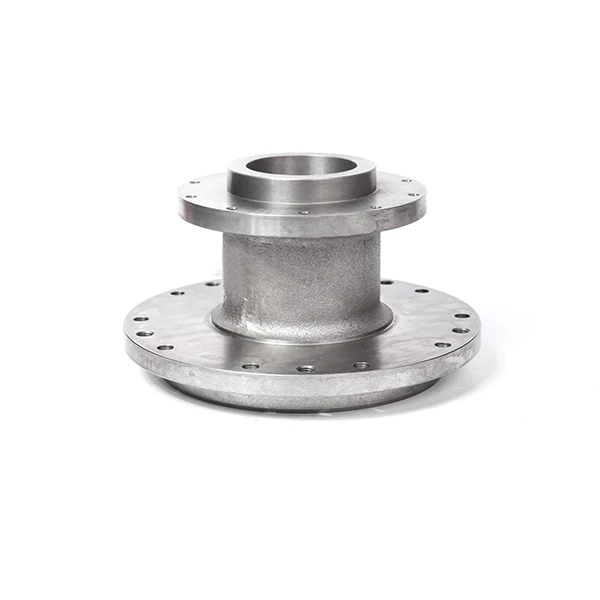Mobile:+86-311-808-126-83
Email:info@ydcastings.com
Exploring the Benefits and Applications of Die Casting Products in Manufacturing
Die Casting Products An Overview
Die casting is a manufacturing process that involves forcing molten metal into a mold under high pressure. This technique has gained significant popularity across various industries due to its ability to produce complex shapes with high precision and excellent surface finish. In this article, we will explore the key aspects of die casting products, including the materials used, the manufacturing process, applications, and the advantages it offers.
Materials Used in Die Casting
The most common materials used for die casting include aluminum, zinc, and magnesium alloys, each of which has unique characteristics that make it suitable for different applications.
1. Aluminum Alloys Known for their lightweight and excellent corrosion resistance, aluminum die casting products are widely used in the automotive and aerospace industries. With good thermal conductivity and strength-to-weight ratio, aluminum castings are ideal for parts that require both durability and efficiency.
2. Zinc Alloys Zinc die casting offers excellent dimensional accuracy and surface finish, making it a preferred choice for precision components like fasteners and connectors. Zinc alloys have low melting points, which allows for shorter cycle times and increased production efficiency.
3. Magnesium Alloys Magnesium is the lightest structural metal, which makes it highly sought after in industries aiming to reduce weight without compromising strength. Die casting magnesium parts are found in consumer electronics and automotive applications where reducing weight is critical for improving fuel efficiency.
The Die Casting Process
The process of die casting involves several key steps
1. Mold Creation The first step is creating a mold, typically made from steel or iron, which can withstand high pressures and temperatures. Molds are expensive and typically made for long-term use.
2. Melting Metal The chosen metal alloy is melted in a furnace at high temperatures. The molten metal is then injected into the die with the help of a piston or a plunger.
3. Injection The molten metal is injected into the mold cavity at high speed and pressure. This ensures that the metal fills every nook and cranny, producing intricate designs and details.
4. Cooling and Solidification Once the mold is filled, the molten metal cools and solidifies quickly due to the metal’s interaction with the cooler mold. This process typically takes a few seconds.
die casting products

5. Ejection After sufficient time has passed, the mold opens, and the newly formed part is ejected. This cycle can be repeated continuously, allowing for mass production of the same part.
Applications of Die Casting Products
Die casting has a wide array of applications across various sectors
- Automotive Industry Engine components, transmission housings, and structural parts are efficiently produced using die casting, ensuring strength while minimizing weight. - Aerospace Precision castings of critical components, such as brackets and housings, allow for high performance and reliability in aircraft.
- Consumer Electronics The casings of smartphones, laptops, and other electronic devices are often made through die casting, offering both aesthetic appeal and robustness.
- Medical Equipment Die cast products are also utilized in the manufacturing of medical devices and specialized equipment that must meet stringent quality standards.
Advantages of Die Casting
The benefits of die casting make it a preferred manufacturing process in many industries
- High Precision and Accuracy Die casting can produce parts with tight tolerances, reducing the need for additional machining processes.
- Cost-Effectiveness While the initial costs for creating molds can be high, the ability to produce large volumes of parts at a low per-unit cost makes it economical for mass production.
- Fast Production Rates The die casting process allows for quick turnaround times, enabling manufacturers to meet high demand.
- Excellent Surface Finish Parts produced through die casting often require minimal post-processing due to their smooth surface finish.
In conclusion, die casting products play a crucial role in modern manufacturing, providing innovative solutions across numerous industries. With advancements in materials and technology, the future of die casting continues to hold promise as a method of producing high-quality, complex components efficiently.
-
Why Should You Invest in Superior Pump Castings for Your Equipment?NewsJun.09,2025
-
Unlock Performance Potential with Stainless Impellers and Aluminum End CapsNewsJun.09,2025
-
Revolutionize Your Machinery with Superior Cast Iron and Aluminum ComponentsNewsJun.09,2025
-
Revolutionize Fluid Dynamics with Premium Pump ComponentsNewsJun.09,2025
-
Optimizing Industrial Systems with Essential Valve ComponentsNewsJun.09,2025
-
Elevate Grid Efficiency with High-Precision Power CastingsNewsJun.09,2025











